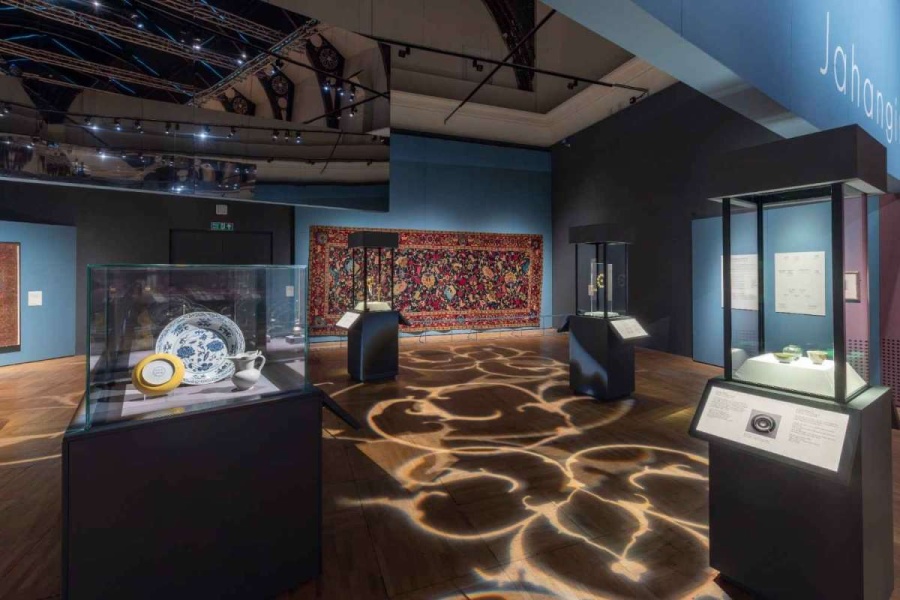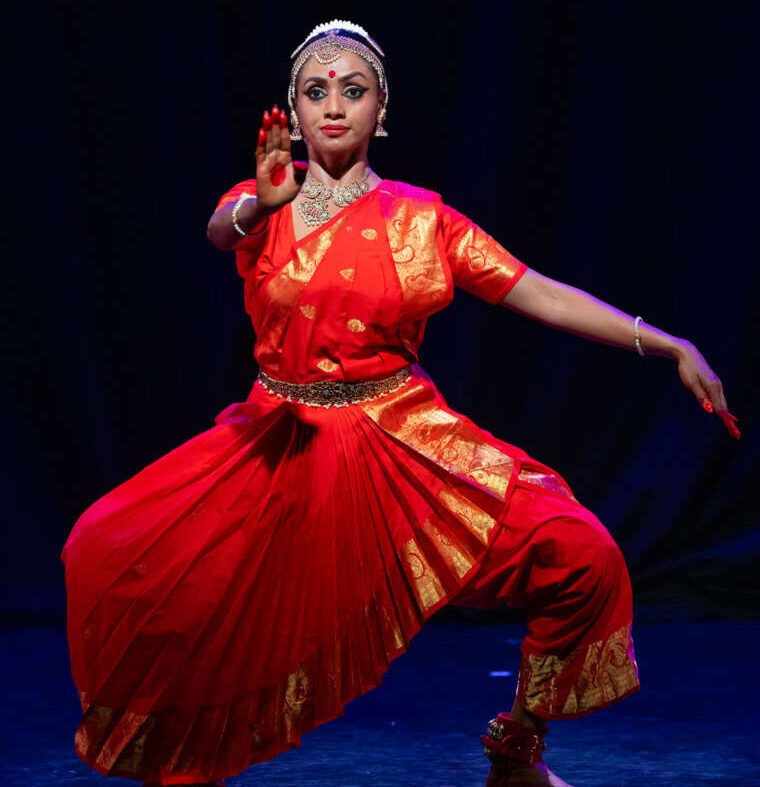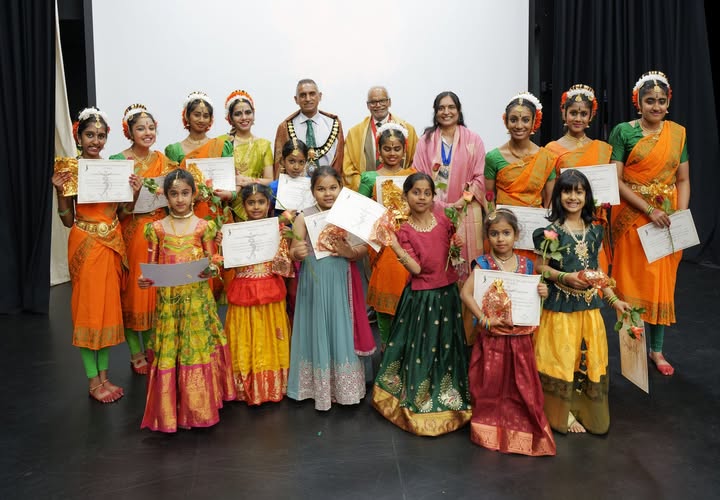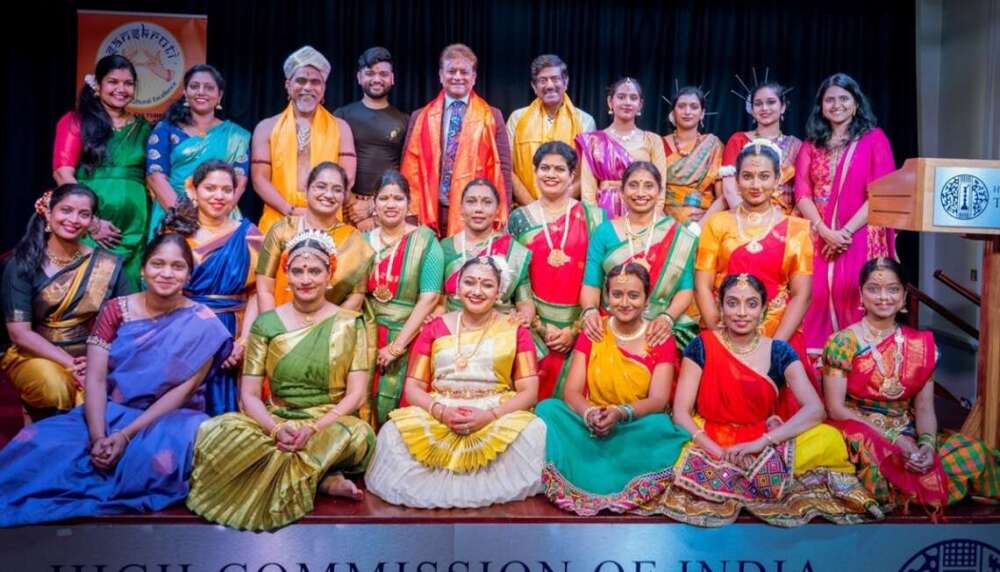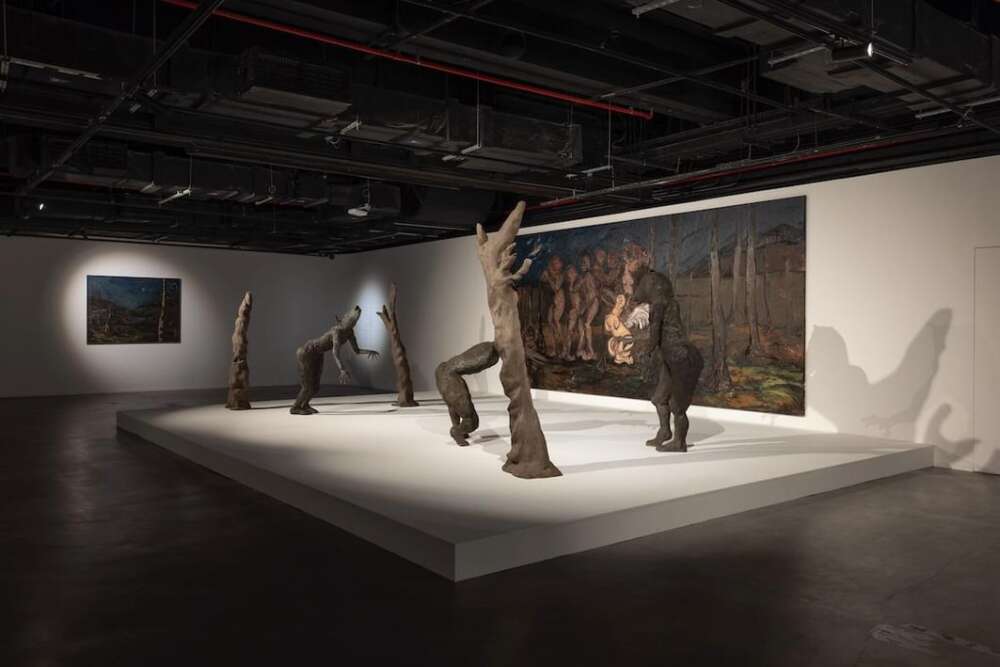From the Punjab, two magnificent suits of armour showcase the outerwear of the Sikh warriors of the period…reports Asian Lite News
Christie’s announced the Art of the Islamic and Indian Worlds including Oriental Rugs and Carpets, a live auction at Christie’s King Street, London, on April 27. The sale features striking examples of manuscripts, paintings, ceramics, metalwork, and carpets.
The auction includes an impressive array of Indian manuscripts and paintings along with an important group of jewelled courtly objects from a private collection. Leading the Indian works on paper is a Mughal painting of A Royal Cavalcade of Hunters and Chenchu couple stalking deer by night attributed to Fath Chand, Mughal India, late 17th century (estimate £150,000-200,000), (illustrated page 6, top left). The painting belongs a group which depict the juxtaposition of the tribal and royal hunt. The nocturnal landscape in which the scene takes place is one that gained in popularity in the Mughal court, probably due to the fascination with European chiaroscuro effects. (Illustrated page 4, top right), An Album of Company School Paintings of Mughal Monuments North India, 19th century. Watercolour on paper, the album comprising 40 paintings depicting monuments of Delhi, Agra and Fatehpur Sikri. (Estimate £20,000-30,000).
From the Punjab, two magnificent suits of armour showcase the outerwear of the Sikh warriors of the period. They are fine examples of the renowned Lahore workshop, and were produced at a time when the city served as the capital of the Sikh Empire under Ranjit Singh, ‘The Lion of the Punjab’ (1801-39). (Illustrated left), A Suit of Gold-Overlaid (Koftgari) plate and mail armour Lahore, Punjab, circa 1800-1850. Comprising helmet (kula khud), four plates (char aina), two armguards (bazuband), mail shirt and red cotton and silk robe. (Estimate £50,000-70,000). (Illustrated right), A rare ‘Ganga-Jamuna’ suit of mail armour Lahore, Punjab, first half 19th century. Comprising a helmet (kula khud), mail shirt (zereh), mail chausses (pyjama zereh), sword belt and pair of shoes. (Estimate £40,000-60,000).
The sale boasts an impressive array of Persian manuscripts and paintings from a number of single owner private collections. One of two masterpieces leading the sale is a Timurid painting, Baysunghur in the Guise of Solomon and the Queen of Sheba, Timurid Herat, first half 15th century. (Estimate £150,000-200,000), (illustrated on page 1). The painting captures the regal grandeur of a royal court scene, and is one of the earliest depictions of what later became a popular subject in Persian painting.
Another highlight is a Zand painting, arguably the best by the artist Muhammad Baqir who was one of the most celebrated artists active between 1740 and 1800, A Reclining Lady, signed Muhammad Baqir, Zand, Iran, dated AH 1173/1759-80 AD (estimate £150,000-250,000), (illustrated below left). A pair of Safavid album pages, one (illustrated below right) with the calligraphy signed Sultan Ali Mashhadi, Timurid Herat, late 15th or early 16th century Persian poetry on paper, (estimate £30,000-40,000), is also notable.
Ottoman ceramics are also well represented – in addition to a number of important examples of Iznik pottery, the sale has a small collection of ceramics from Kutahya, a kiln site that gained in popularity after the decline of Iznik. The highlight of this section is A Lavender Ground Iznik Pottery Jug, Ottoman Turkey, circa 1570, (illustrated below centre), (estimate £120,000-180,000), a wonderful example of a rare and visually striking group of Iznik pottery that was made for a short period around 1570, typified by the coloured slip decoration covering the bodies of the vessels.
Sara Plumbly, Head of Department, Art of the Islamic and Indian Worlds comments, ‘The April sale brings together an exciting and wide range of works of art from across the Islamic and Indian worlds. Of particular note is a number of private collections across a variety of fields – from Persian and Indian manuscripts and paintings to Ottoman ceramics. We are particularly excited to offer a very important group of Mughal jewelled objects as well as a number of Persian paintings from the 15th to the 19th centuries’.
ORIENTAL RUGS AND CARPETS
The forthcoming sale includes 96 highly decorative antique Oriental rugs and carpets, woven in cities, villages or nomadic encampments from all along the silk route. The highlight of the sale (illustrated below) is an extremely rare Anatolian ‘Phoenix In Octagon’ rug woven in the late 15th/early 16th century, Central or Eastern Anatolia. (Estimate £100,000-150,000). One of only 18 examples remaining from the Seljuk and early Ottoman, ‘Animal Carpet’ group, this carpet is unique in that it’s the only known carpet to survive bearing the mythical figure of the phoenix, imagery which is depicted in early Renaissance paintings, including one of The Annunciation by Jacopo Bellini in Brescia.
WOVEN ART IN WESTERN PAINTINGS FROM THE 15TH TO 17TH CENTURIES
Carpets and luxury textiles have been symbols of power, status and great wealth for millennia, however due to their use and relative fragility they have not survived in great numbers. As a result, the importance of classical paintings for our knowledge of early carpets cannot be overstated, as they provide context for these weavings and allow us a glimpse of how they were traded, used and valued by their wealthy owners. The great European painters of the 15th – 17th centuries depicted these prized objects in royal, noble or religious settings. Seen beneath the feet of the Madonna and Child in 15th century frescos, or upon tables, beds and over balconies in portraiture settings depicting Royal or noble Europeans in the 16th and 17th centuries. Coined after these great early renaissance masters, the sale includes examples of a ‘Lotto’, ‘Ghirlandaio’, ‘Small-pattern Holbein’, and ‘Holbein variant’ rugs (examples illustrated below). (Illustrated below left), A ‘Ghirlandaio’ rug, West Anatolia, 17th century. (Estimate £50,000-70,000). (Illustrated below centre) A ‘Holbein’ variant rug central or East Anatolia, late 16th/early 17th century. (Estimate £80,000-120,000). All three carpets are from the same distinguished European collector and have not been seen on the market for the last 30 to 40 years.
Other carpets of note in the sale are two 18th century rugs woven in the Deccan in India. Due to strong trading ties with the Dutch East India Company, these rugs were traded with Japan where they were highly prized, and invariably only used in the annual celebration of the traditional Kyoto Festival where they were honoured by being used to decorate the festival floats (which explains their excellent condition).
Louise Broadhurst, Specialist and Christie’s International Head of Rugs and Carpets comments, ‘This sale has a wide variety of rugs and carpets that will appeal to the discerning collector. The theme of early eastern carpets that appear in the paintings of the early Renaissance and later Old Masters is a narrative that helps us contextualise these precious works of art, and appreciate them through the eyes of our predecessors. A large number of pieces in the sale are consigned from three significant collectors in the field, with an eye for colour, design and individuality’.
Estimates start from £1,000 – 1,500 for Islamic works of art, and from £1,500 – 2,000 for Oriental Rugs and Carpets.
The Art of the Islamic and Indian Worlds including Oriental Rugs and Carpets view and exhibition opens to the public from April 22 – 26 at Christie’s, King Street, London.
ALSO READ-Traditional, tribal and vintage art



